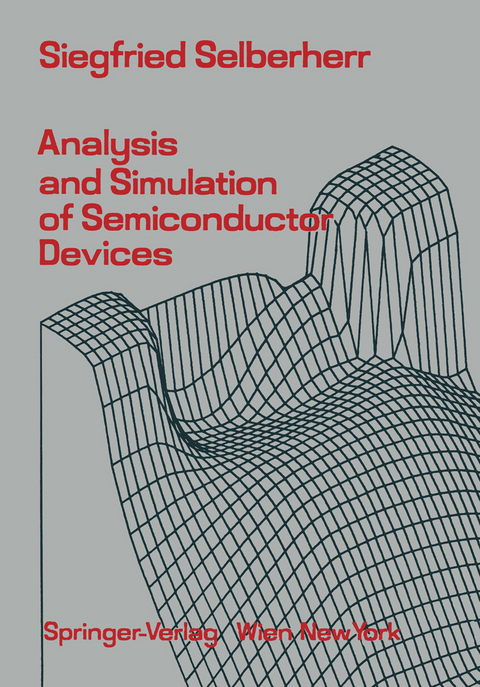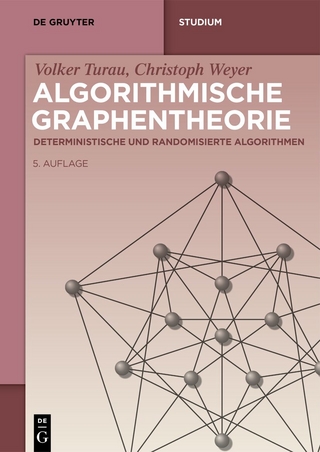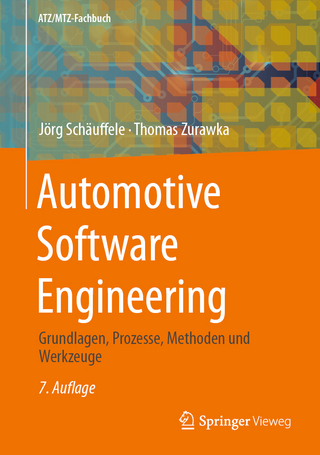
Analysis and Simulation of Semiconductor Devices
Springer Wien (Verlag)
978-3-7091-8754-8 (ISBN)
1. Introduction.- 1.1 The Goal of Modeling.- 1.2 The History of Numerical Device Modeling.- 1.3 References.- 2. Some Fundamental Properties.- 2.1 Poisson's Equation.- 2.2 Continuity Equations.- 2.3 Carrier Transport Equations.- 2.4 Carrier Concentrations.- 2.5 Heat Flow Equation.- 2.6 The Basic Semiconductor Equations.- 2.7 References.- 3. Proeess Modeling.- 3.1 Ion Implantation.- 3.2 Diffusion.- 3.3 Oxidation.- 3.4 References.- 4. The Physical Parameters.- 4.1 Carrier Mobility Modeling.- 4.2 Carrier Generation-Recombination Modeling.- 4.3 Thermal Conductivity Modeling.- 4.4 Thermal Generation Modeling.- 4.5 References.- 5. Analytical Investigations About the Basic Semiconductor Equations.- 5.1 Domain and Boundary Conditions.- 5.2 Dependent Variables.- 5.3 The Existence of Solutions.- 5.4 Uniqueness or Non-Uniqueness of Solutions.- 5.5 Sealing.- 5.6 The Singular Perturbation Approach.- 5.7 Referenees.- 6. The Diseretization of the Basic Semiconductor Equations.- 6.1 Finite Differences.- 6.2 Finite Boxes.- 6.3 Finite Elements.- 6.4 The Transient Problem.- 6.5 Designing a Mesh.- 6.6 Referenees.- 7. The Solution of Systems of Nonlinear Algebraic Equations.- 7.1 Newton's Method and Extensions.- 7.2 Iterative Methods.- 7.3 Referenees.- 8. The Solution of Sparse Systems of Linear Equations.- 8.1 Direct Methods.- 8.2 Ordering Methods.- 8.3 Relaxation Methods.- 8.4 Alternating Direction Methods.- 8.5 Strongly Implicit Methods.- 8.6 Convergence Acceleration of Iterative Methods.- 8.7 Referenees.- 9. A Glimpse on Results.- 9.1 Breakdown Phenomena in MOSFET's.- 9.2 The Rate Effect in Thyristors.- 9.3 Referenees.- Author Index.- Table Index.
| Erscheint lt. Verlag | 30.12.2011 |
|---|---|
| Zusatzinfo | XIV, 296 p. |
| Verlagsort | Vienna |
| Sprache | englisch |
| Maße | 170 x 244 mm |
| Gewicht | 540 g |
| Themenwelt | Mathematik / Informatik ► Informatik ► Software Entwicklung |
| Naturwissenschaften ► Physik / Astronomie ► Atom- / Kern- / Molekularphysik | |
| Technik ► Elektrotechnik / Energietechnik | |
| Technik ► Maschinenbau | |
| Schlagworte | Analysis • Halbleiterbauelement • Modell (Math.) • Numerische Mathematik • Partielle Differentialgleichung • semiconductor • Simulation |
| ISBN-10 | 3-7091-8754-0 / 3709187540 |
| ISBN-13 | 978-3-7091-8754-8 / 9783709187548 |
| Zustand | Neuware |
| Informationen gemäß Produktsicherheitsverordnung (GPSR) | |
| Haben Sie eine Frage zum Produkt? |
aus dem Bereich


